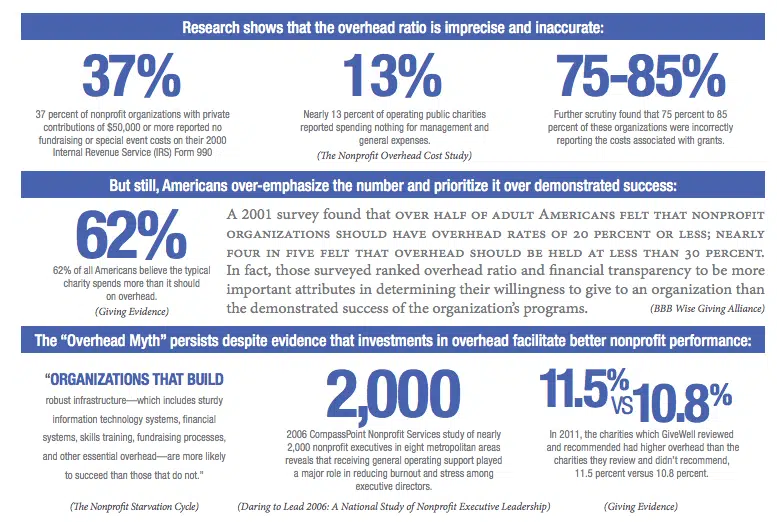The Most Important Statement in the Nonprofit World in the Last Decade


Full Platform Overview Chat With Us



Full Platform Overview Chat With Us




Perhaps you are thinking the title of today’s post is a bit bold. However, after reading below, I am hoping you agree that it is literally not strong enough!
My thoughts are centered about the groundbreaking joint announcement by three of the premier watch dog groups in the charity sector. Together the BBB Wise Giving Alliance, Guidestar and Charity Navigator have been the “thought leaders” regarding the rating of all nonprofit organizations.
The first few paragraphs and the final paragraph of their joint statement were absolute music to the ears of most nonprofit leaders. They are pasted in below in their entirety for you to absorb:
“To the Donors of America:
We write to correct a misconception about what matters when deciding which charity to support.
The percent of charity expenses that go to administrative and fundraising costs—commonly referred to as “overhead”—is a poor measure of a charity’s performance.
We ask you to pay attention to other factors of nonprofit performance: transparency, governance,
leadership, and results. For years, each of our organizations has been working to increase the depth and breadth of the information we provide to donors in these areas so as to provide a much fuller picture of a charity’s performance.
. . .
So when you are making your charitable giving decisions, please consider the whole picture. The people and communities served by charities don’t need low overhead, they need high performance.
Thank you,
Art Taylor
President & CEO,
BBB Wise Giving Alliance
overheadmyth.give.org
Jacob Harold
President & CEO,
GuideStar
overheadmyth.guidestar.org
Ken Berger
President & CEO,
Charity Navigator
www.charitynavigator.org
My first comment is going to mirror one made by my friend of The Agitator fame Mr. Roger Craver in his post “When Sharks Become Vegans.” I also believe the TED Talk by Dan Pallotta, which went viral in our sector, outlining what is holding back most nonprofits from growing as rapid as commercial businesses had to have inspired some aspect of this joint statement. If you have not seen the video you owe to yourself to grab a beverage and enjoy.
No matter what the reason or the inspiration, I am delighted beyond all belief to see this joint statement being made. Yes, overhead is important, but it is not the only factor in declaring success. Perhaps this joint statement will finally allow nonprofit organizations of all sizes to invest from time to time in innovative tools, techniques and yes, even staff to insure more rapid growth and success in the future!
Without this declaration of factors besides overhead being important, most of the charities would continue to operate like the majority of publicly held commercial corporations who are held slave to another master, “Quarterly Results.” The quarterly result mindset keeps so many of the corporations from even occasionally “investing” in innovative tools, techniques and staff to accelerate future growth and profits.
Nonprofit leaders and more importantly, board members, please use this as your guiding sign and permission to truly evaluate game changing factors to your future success. Please allow a few budget variances to invest for the future! Keep in mind you can and should closely track the return on investment for those budget variances. A top notch scorecard to review at each subsequent board meeting might be a superb idea.
What do you think? Can this be the vastly needed permission needed for more game changing ideas and actions to take place?

Comments
The Overhead Myth Revisited
Elaine Fogel
Diane
Claire Axelrad
Jay Love
Kevin Cahill
Gayle L. Gifford, ACFRE